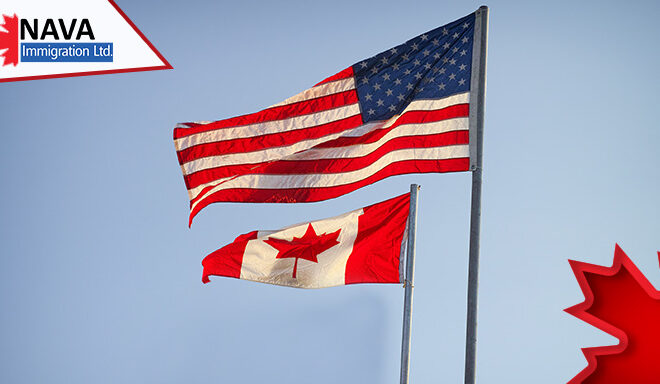Canada Set to Assess Main Immigration Law: What’s Changing?
Canada to assess main Immigration Law. Canada’s immigration department, Immigration Refugees and Citizenship Canada (IRCC), stated that it will conduct an assessment of the Immigration and Refugee Protection Act (IRPA). This will be accomplished per the recently released Strategy called “Immigration System for Canada’s Future.”
Immigration System for Canada’s Future and Immigration and Refugee Protection Act (IRPA)
Canada’s new Strategy describes the changes IRCC plans to implement in the future. These changeovers are to enhance the processing efficiency and develop a more holistic strategy for immigration.
IRCC stated that it can accomplish this by implementing the strategies that fall under these pillars:
- Develop a more friendly experience for newcomers
- Integrate immigration with labor market demands
- Establish a comprehensive and coordinated growth strategy
Canada’s immigration system is governed by a law called IRPA, i.e., the Immigration and Refugee Protection Act. It creates a framework that outlines the functioning of IRCC.
The planned modifications to IRPA lie under one of the pillars above, i.e., “Developing a more friendly experience for newcomers” when they immigrate to Canada. The department further stated that this entails striving to be more efficient, fair, transparent, modern, timely, and predictable working conditions.
Furthermore, the department highlights the necessity of legislative modifications or reforms. This is because IRPA serves as the primary legislation backing the majority of IRCC’s policies, programs, and processes. Since its enactment 21 years ago, in 2002, the IRPA has not undergone a comprehensive examination.
Last Notable Update of IRPA
Until June 2002, IRPA didn’t exist in its present form. Prior to this, in Canada, there was an Immigration Act in Canada established in 1976. Immigration Act, during its serving period as Canada’s main immigration law, has gone under several revisions.
In 2002, IRPA was introduced to create a more transparent and modern law. This was done to ensure that the immigration and refugee protection system in Canada can effectively address the new challenges and possibilities.
Additionally, it also sought to provide a more detailed and clear definition of the primary classification of foreign nationals. These include family class, economic class, and convention refugees and individuals in similar circumstances. As per the current announcement, Canada is to assess the main Immigration Law soon.
Canada to assess main Immigration Law, IRPA: How it can help?
Canada’s primary immigration law, IRPA, comprises legislation governing practically every area of the immigration minister’s responsibility. Additionally, it also discusses how these laws should be carried out.
According to IRCC, assessing the IRPA will help Canada eliminate obstacles to attracting people that Canada needs to achieve its future goals. For instance, IRPA includes laws that help in creating new immigration pathways. Recently introduced category-based draws under Express Entry is one such example.
Moreover, an assessment and update may pave the way for more specialized pathways for new immigrants who are skilled in high-demand professions.
The Strategy also demonstrates how Canada’s federal and provincial governments work together to share immigration responsibilities.
IRCC holds agreements with provincial and territorial governments that enable them to select economic immigrants through the popular immigration program called the Provincial Nominee Program (PNP). Canadian government specifies the total number of nominations to each province that they can nominate to settle in the nominating province. As per the law, in order to determine the total number of nominations for each province, the Minister is required to consult with the provinces.
The consultation determines how many foreign nations in each class will become Permanent residents in Canada every year and what their distribution will be in Canada.
What’s more to come?
According to IRPA, IRCC must consider the demographic and regional needs to accomplish its goal. The discussion must include stakeholders and relevant partners.
This update to IRPA might enforce increased consultations with other stakeholders, such as settlement services. This will assist in gaining a better sense of the capacity of Canada to integrate new immigrants into the country. This fits under the Strategy’s goal of implementing a whole-of-government plan for immigration.
The discussions also impact the federal Immigration Levels plan. The Plan sets the total number of permanent residents that Canada targets for the upcoming three years. As per the rule, the Canadian government is mandated to release the Plan every year on or by November 1 in every non-election year.
Canada recently released the immigration level plan for 2024-2026. As per this, in 2024, it hopes to admit 485,000 new PRs to the country. In both 2025 and 2026, it desires to accept 500,000 new PRs.
Canada’s immigration minister, March Miller, stated that the recent Plan will grow and stabilize the country’s economy.
In addition to all these, IRPA also discusses the laws concerning how candidate’s applications must be submitted. This concerns the technology, format, and processes that candidates must follow to submit the applications.
IRCC stated that by assessing and updating the IRPA rules and regulations concerning how candidates’ applications are submitted and processed, the department could address Canada’s current growing demands presently and in the future.
Category-Based draws under Express Entry
Despite the lack of comprehensive review, the act has been revised to reflect the current surge in demand for immigration to Canada.
For instance, IRPA was used in 2022 to authorize the immigration minister to conduct the draws to issue invitations to apply to candidates of Express Express whose attributes align with one of the six newly selected categories, which are as follows:
- Trades;
- Transport;
- Healthcare;
- STEM professions;
- Agriculture and agri-food; and
- French language proficiency
These new categories also coincide with the objectives of IRPA to allow Canada to maximize the economic benefits of immigration. IRCC may help support and build the national economy by selecting new immigrants who are skilled in in-demand sectors with increased vacancies.





